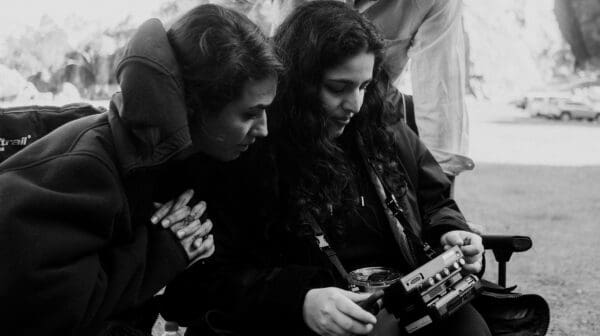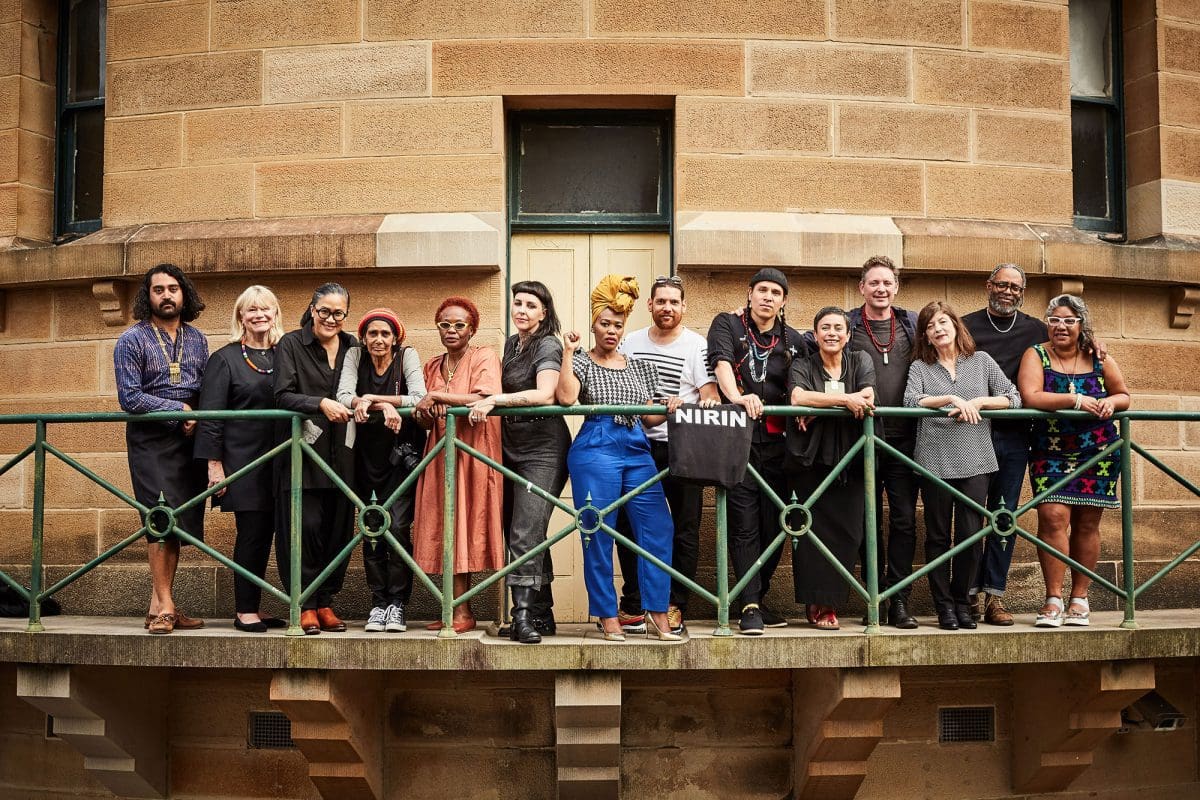
Finding New Spaces Together
‘Vádye Eshgh (The Valley of Love)’ is a collaboration between Second Generation Collective and Abdul-Rahman Abdullah weaving through themes of beauty, diversity and the rebuilding of identity.

Brook Andrew’s grandmother was forbidden to speak her Wiradjuri tongue. “People need to understand there were generations of genocide in this country,” the artist and first Indigenous Australian artistic director of the 22nd Biennale of Sydney (which will take place across six Sydney sites in 2020) tells Art Guide Australia. “And it takes time, slowly, to piece a lot of that stuff back together.”
Andrew has announced the first 33 artists, creatives and collectives who will participate in the next BOS, many of whom are First Nations artists. And he says there will be at least 35 more artist entities, including work by scientists, announced in September.
His title for the next Biennale, NIRIN, is a Wiradjuri word that translates in English as “edge,” but the word more accurately signifies “ancient practices that speak loudly.”
“It is our centre,” says Andrew, acknowledging the complications of translation. “The English word ‘edge’ is not the centre, but for an Aboriginal philosophy, nirin hasn’t even got anything to do with the edge. It’s a practice.”
Andrew adds, “That’s the problem with English; it’s a very bureaucratic language, and it doesn’t have the flexibility. So when people think nirin is a contradiction, that’s just part of the charm.”
First Nations languages are being revitalised in 2019, International Year of Indigenous Languages. Andrew’s Wiradjuri vocabulary comes from his maternal line and language programs.
There are seven Biennale themes, all in Wiradjuri: Dhaagun (earth: sovereignty and working together), Bagaray-Bang (healing), Yirawy-Dhuray (yam-connection: food), Gurray (transformation), Muriguwal Giiland (different stories), Ngawaal-Guyungan (powerful-ideas: the power of objects) and Bila (river: environment).
“I think it’s dangerous, because [the government is] leaving most of the country out of the picture,” he says. “If there is this spirit of fair dinkum-ness that seems to be an Australian rite of passage, that leaves out a lot of people in this country, and also a lot of people who have come to this country… People are kind of uneducated or ignorant about the real histories of this country.”
Auckland-born Maori artist Lisa Reihana’s 2017 Venice Biennale entry, a wall-sized live-action rolling animation depicting Cook’s voyages, In Pursuit of Venus (Infected), reinstated dignified depictions of Indigenous people erased from colonial-era art. At the BOS announcement on 9 April, where she was named as a participant, Reihana said, “Perhaps some of that [$48.7 million] will be co-opted into counter-narratives. It’s really important we have these counter-narratives, to remind us of our histories.”
Reihana added, “For instance, it’s horrific what has just happened in Christchurch in New Zealand, the terrible death of 50 people at the mosques. But what’s bubbling up is a counter-narrative: in Aotearoa/New Zealand that was not the actual biggest killing of a group of people. When you start to look at some of our Maori histories … hundreds of people were killed [in single events]… There is an opportunity to investigate what makes up a nation.”
Reihana’s entry in the 22nd Sydney Biennale will be an augmented version of Nomads of the Sea, 2018, her four-channel, 3D animation currently on show at the Sharjah Biennial in the United Arab Emirates.
The work links the histories of Australia and New Zealand, a trans-Tasman colonial story about a boat stolen from Tasmania in 1804. It tells the tale of a pakeha female mutineer, the English-born Charlotte Badger, and a proud woman of Nga Puhi descent, Puhi.
“I was very interested in woman’s business and woman’s power at that time,” says Reihana.
Meanwhile, the Biennale’s overall concept NIRIN is “driven by stories and grass-root practices,” says Brook Andrew. Will artists in this Biennale have anything to say about turning back to Indigenous land practices as we face the twin challenges of global warming and mass migration of displaced people?
“Absolutely,” says Andrew. “One thing (Tlingit-Nuen artist) Nicholas Galanin talks about is the rights to salmon, fishing and hunting in his traditional lands in Alaska.
“But also we have to remember that First Nations people have had contact throughout the world before British or Spanish or Dutch colonisation. So we’re very international, and intermarried, into a global world.
“So these First Nation identities are very global. Even though people like to think they’re local. That’s what’s driving this fever among the artists.”
See the complete list of the first 33 BOS artists here.
NIRIN: 22nd Biennale of Sydney
Art Gallery of NSW, Artspace, Campbelltown Arts Centre, Cockatoo Island, Museum of Contemporary Art Australia, and the National Art School.
14 March – 8 June 2020